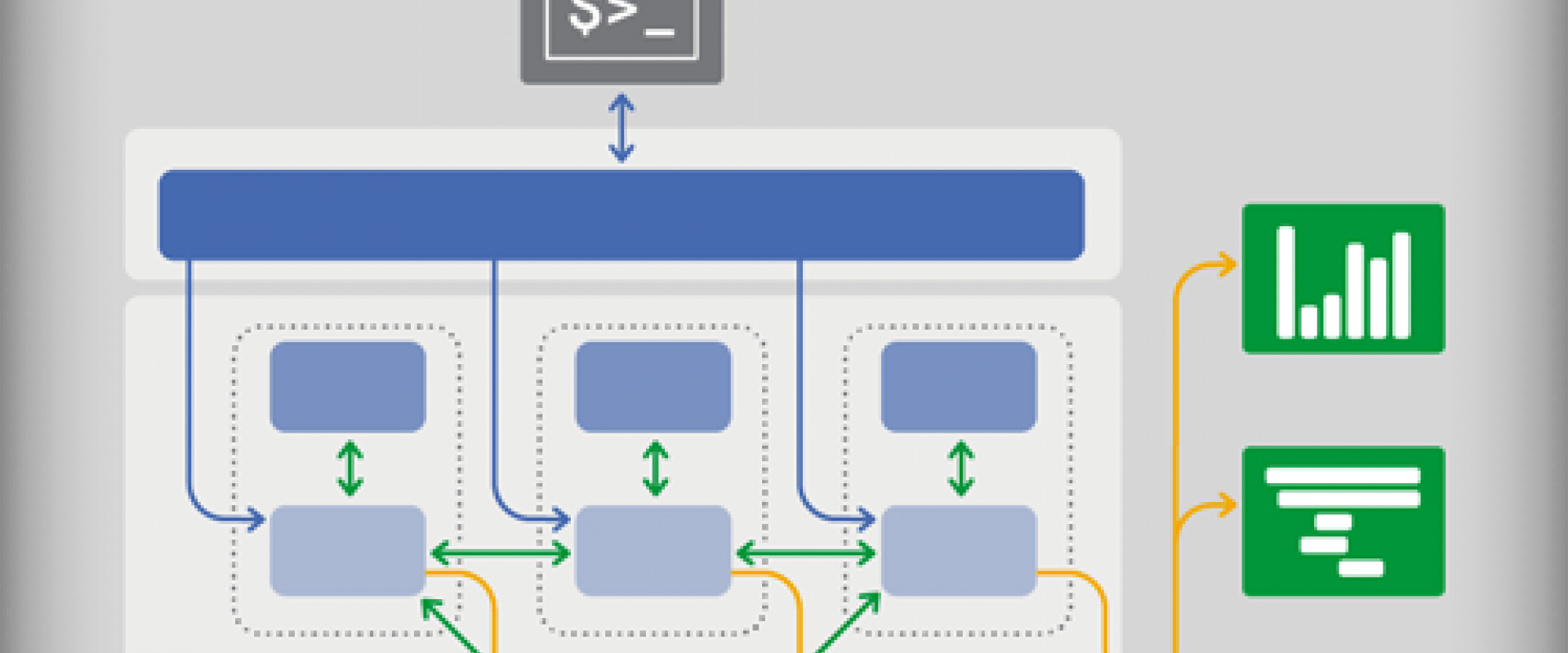The Art of Deploying a Service Mesh

Check out the benefits of deploying a service mesh, popular tools for deploying a Service Mesh, and more here in this article.
Service mesh is the next logical step to overcoming security and networking challenges obstructing Kubernetes deployment and container adoption. Check out the benefits of deploying a service mesh here.
With the increased adoption of Microservices, new complexities have emerged for enterprises due to a sheer rise in the number of services. Problems that had to be solved only once for a monolith, such as resiliency, security, compliance, load balancing, monitoring, and observability, now need to be handled for each service in a Microservices architecture.
In the 2020 Cloud Native Survey, the Cloud Native Computing Foundation (CNCF) found that the use of service mesh in production has jumped by 50% from last year.
This blog provides information on some of the popularly used service meshes and highlights the reasons why enterprises are considering service meshes for traffic management. Here, we’ll discuss:
- What is a Service Mesh?
- Benefits of Deploying a Service Mesh.
- Popular tools for Service Mesh, such as ISTIO.
What Is a Service Mesh?
A service mesh architecture is a configurable infrastructure to manage all interprocess service-to-service network communications within the cloud environment using APIs. A service mesh helps in controlling and monitoring how different parts of an app share data with one another. A service mesh architecture ensures that communication among services within the containerized infrastructure is fast, reliable, and secure.
Benefits of Deploying a Service Mesh
Deploying a service mesh in Kubernetes helps in avoiding downtime as an app grows. It provides complete visibility, resilience, traffic, and security control of services with little or no change to the existing code, thus freeing developers from the pains of building new codes to address networking concerns.
A service mesh architecture provides a number of advantages,including:
Observability
With its incredible capabilities of service-level visibility, tracing, and monitoring, using a service mesh in Kubernetes renders deep insights and granular observability into distributed services. It acts as an important means to provide useful and detailed information on what is happening at the application level. It brings visibility into the application, thus allowing businesses to learn in-depth about the health status of each service and the overall application. Engineering teams can troubleshoot and alleviate incidents with better visibility and remove bottlenecks if any, so the app keeps functioning well.
Security
Security is a major concern for enterprises while deploying a service mesh in Kubernetes. A service mesh assures a well-controlled and authentic handling of encryption practices and access control rules. This ability to control traffic spanning the environment builds a strong and robust security infrastructure. Moreover, as the number of services increases in the Microservices, there is a rise in network traffic flowing parallelly. This makes it very easy for hackers to unethically barge into the security system and break into the flow of communication. Service mesh secures the interactions within the network by providing a mutual Transport Layer Security (TLS). This acts as a full-stack solution to authenticate services, enforce security and compliance policies, and encrypt traffic flow between the services.
Routing
A service mesh in Kubernetes provides granular control of network traffic to determine where the request for the services is routed. In addition to security and observability, as discussed above, enterprises use a service mesh to help control load balancing and routing. Intelligent routing controls the flow of traffic and API calling between the services. An API call is a process that takes place when a request is sent after setting up the API with the correct endpoints. Once the setup is complete, the information is transferred, processed, and the response is sent. Due to its ability to control traffic, a service mesh helps in smooth, secure, and compliant Kubernetes deployment and safely rolls out new application upgrades without any interruption.
Popular Service Mesh Technologies
There are several technologies that offer service mesh functionalities. Here are some of the most popular ones being used in the industry these days:
- Istio
- Linkerd
- Envoy
- Conduit
How to Choose the Ideal Platform for Kubernetes Deployment?
Security, compliance, and observability are major concerns for enterprises planning for Kubernetes deployment. Organizations have to face a lot of challenges in deploying a service mesh and making it all-ready for production. After exploring all possible scenarios that enterprises face, tech leaders and industry experts suggest these as must-have features of the platform you choose:
- Tools: Default integration with some of the best-industry tools such as Hashicorp Vault and Service Mesh ISTIO.
- Cluster Management: Enables smooth, secure, and compliant cluster management and deployment.
- Cluster Monitoring: Provides comprehensive Kubernetes monitoring allowing the DevOps team to gain deep insights into the cluster entities.
Kubespray, Minikube, Kubeadm, Bootkube, and BuildPiper are some of the popular tools for Kubernetes deployment available in the market today.
Wrapping Up
A service mesh is responsible for constantly keeping up with the security concerns within the cloud environment. This is the reason why deploying a service mesh in Kubernetes is a priority for the DevOps team these days. Considering the right tools, a proficient team, along with an effective Microservices management platform that can tranquilize the complexity of deploying a service mesh, are important to enable rapid, secure, and hassle-free delivery of Microservices applications.
We Provide consulting, implementation, and management services on DevOps, DevSecOps, Cloud, Automated Ops, Microservices, Infrastructure, and Security
Services offered by us: https://www.zippyops.com/services
Our Products: https://www.zippyops.com/products
Our Solutions: https://www.zippyops.com/solutions
For Demo, videos check out YouTube Playlist: https://www.youtube.com/watch?v=4FYvPooN_Tg&list=PLCJ3JpanNyCfXlHahZhYgJH9-rV6ouPro
If this seems interesting, please email us at [email protected] for a call.
Relevant Blogs:
Decorating Microservices Manage
Microservices With Docker Compose
Recent Comments
No comments
Leave a Comment
We will be happy to hear what you think about this post